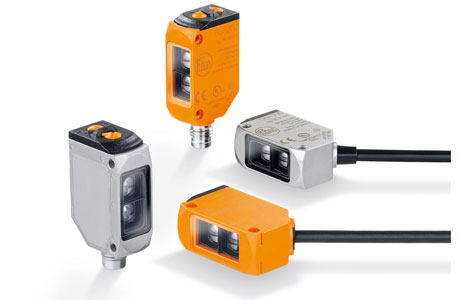Key Takeaway
To choose the right photoelectric sensor, consider factors like the sensor type, detection range, and environmental conditions. Different sensors, such as through-beam, retroreflective, or diffuse, work best for different applications. For example, through-beam sensors are ideal for long-range detection, while diffuse sensors are better for close-range tasks.
Also, evaluate the sensor’s accuracy, output type (analog or digital), and installation location. Matching the sensor to your specific needs ensures reliable performance and avoids common mistakes like choosing the wrong range or output.
Factors to Consider When Selecting a Photoelectric Sensor
When selecting a photoelectric sensor, it’s important to consider several key factors that will impact performance. First and foremost is the sensing distance—how far away can the sensor detect an object? This will depend heavily on your specific application. For example, if you need to detect objects at longer distances, you’ll need a sensor with an extended range. On the other hand, for close-up detection, a sensor with high precision might be more suitable.
You’ll also want to consider the operating environment. Is the sensor going to be exposed to dust, moisture, or extreme temperatures? Sensors with specific IP ratings can handle tough conditions, while others might only be suitable for cleaner, controlled environments. Lastly, pay attention to the response time. In fast-moving applications, a quick response time can mean the difference between smooth operations and costly delays.

Matching the Sensor Type to Your Industrial Application
As a newly joined engineer, one of the key aspects you’ll deal with is selecting the right photoelectric sensor for various applications. Understanding the three main types—thru-beam, retro-reflective, and diffuse—is essential. Each sensor type serves specific industrial needs, so you can’t apply a one-size-fits-all approach.
For example, thru-beam sensors offer high accuracy and are best suited for long-range detection, especially in environments where dust or dirt can interfere with other sensor types. Retro-reflective sensors, on the other hand, are easier to install, as the sensor and reflector are placed on the same side. This setup is useful in compact spaces where installation might otherwise be tricky. Lastly, diffuse sensors are perfect for short-range tasks but can be impacted by environmental factors like lighting. Being familiar with these differences will help you select the right sensor for each situation.
Evaluating Sensor Specifications: Range, Accuracy, Output
Once you understand the types of sensors, the next step is evaluating their specifications—focusing on range, accuracy, and output. Each specification directly affects the sensor’s performance, so it’s crucial to match them to your application needs.
Range is the first aspect to assess. Ensure the sensor can detect objects at the desired distance, and consider adjustable sensors if you need more flexibility. Accuracy is equally vital, particularly in high-precision tasks like counting small objects on a production line. Finally, you need to confirm that the sensor’s output type—whether PNP, NPN, or analog—matches the rest of your control system. Overlooking these factors can lead to system integration issues, costing both time and resources. Getting this right ensures smooth operation across your industrial applications.
Industry-Specific Considerations for Choosing the Right Sensor
The type of industry you work in will significantly influence your sensor choice. For instance, in the food and beverage sector, sensors must be compliant with stringent hygiene standards. Washdown-resistant sensors, built from durable materials that withstand frequent chemical cleaning, are typically required.
In contrast, automotive manufacturing demands sensors that can endure harsh conditions like oil exposure and high temperatures. Durability is a must here. Meanwhile, in warehouse automation, sensors need to be fast and handle large volumes of products with pinpoint accuracy. Selecting the right sensor based on your specific industry needs will make a huge difference in efficiency and reliability. It’s not just about the sensor’s features—it’s about how well it integrates with your operational environment.
Common Mistakes to Avoid When Selecting a Photoelectric Sensor
Even experienced engineers sometimes fall into common pitfalls when choosing photoelectric sensors. One of the most frequent mistakes is failing to account for environmental conditions. A sensor that works flawlessly in a clean, controlled space may falter in a dirty or wet environment. To avoid this, always check the sensor’s IP rating to ensure it can handle the demands of your workspace.
Another common error is selecting the wrong sensor type for the application. Using a diffuse sensor for long-range detection will often result in inconsistent performance. Similarly, not considering the cost of ownership can lead to higher expenses over time. It’s tempting to go for the cheapest option, but a low-quality sensor might wear out quickly, leading to more frequent replacements. By avoiding these mistakes, you’ll ensure your sensors perform optimally, reducing downtime and long-term costs.
Conclusion
In conclusion, selecting the right photoelectric sensor involves carefully balancing key factors such as application requirements, sensor type, and environmental conditions. Understanding the sensing distance and the specific environment will help you decide between thru-beam, retro-reflective, or diffuse sensors. Additionally, reviewing sensor specifications like range, accuracy, and output type ensures compatibility with control systems. Industry-specific needs, such as hygiene in food production or durability in automotive settings, should also be considered. Avoiding common mistakes like overlooking environmental conditions or choosing an incompatible sensor will ensure long-term reliability and optimal performance.
